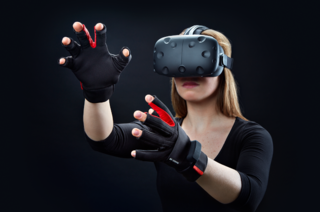Immersion
| Immersion occurs when the gamer’s point of view is shifted to be within the game world. |
| (Brad Talton Jr.) |
Overview
A lot of work has been done in this area.
As videogaming becomes more and more significant, economically speaking, more and more resources are invested in finding out why the popular games are so popular and how to make more immersive games. This leads to new approaches (as the development of technology permits) which in turn engenders new analyses! Just look at how the philosophy of art has changed since Plato, as developments in art and in its philosophy feed off each other! So what is written here will inevitably become dated.
Flow
Early analyses back in the 1990's focused on flow: a mental state when one deeply concentrates on a particular task and enjoys it, thus losing oneself in the activity.
Gameplay and Narrative
Other early analyses focused either on immersion related to a ludological approach: gameplay (getting absorbed in meeting the game's challenges - such as in Space Invaders or PacMan) or a narratological approach: looking at narrative (the building up of the story of one's avatar); and the relationship between these two factors.
Links
- The Philosophical Roots of Computer Game Design by Ernest W. Adams (2004), Game Developers' Conference, San Jose, California.
- Abstract: This lecture is a theoretical discussion of the historical, social and technological forces that produced the contemporary culture of computer game design and development. Although game design might seem to be primarily about making successful commercial products, in fact the subjects we choose to explore in our games are not necessarily dictated by the market, but are the product of our own peculiar philosophical origins. As digital technologists we work with the classical tools of logic and order; as creative people we strive for the expression of romantic ideals. This tension between the classic and the romantic sides of our medium is the source of some of our more intractable creative problems. This lecture is not intended to offer specific solutions, but to enlighten and entertain.
- Other lectures by Ernest W Adams (1998-2014)
- In The Game : An Exploration of the Concept of Immersion in Video-Games and its Usage in Game Design by CMS Ojeda (2007)
- Abstract: This thesis outlines a research project whose aim was to develop a design taxonomy for the creation of immersion in video-games. These guidelines can then be used in-sync with different stages in video-game design and development to ensure an immersive experience. Integral to this is the 'suspension of disbelief' the end user experiences when fully immersed in a video-game (Holland, 2002; Mediacollage.com, 2006).
More simplistic
- www.gamedesigning.org (for video games).
- gms.magazine.com (for role-playing games).
- Tangential but fun!
- HEARTS, CLUBS, DIAMONDS, SPADES (1996): achievers, explorers, socialisers and killers
Our own
- Why is Oolite so addictive? (2011)
Oolite Issues
Thoughts
Improving Immersion in Oolite
There are at least three different areas where things can be improved:
- 1) External stuff. Your computer screen. Too slow a processor to cope with your version of the game (which oxp's you want to load...). Using a controller or a joystick. Using a button box or an external screen. The chair you sit in. Etc., etc.
- 2) Context. Adding context by reading some of the OoFiction, for example.
- 3) OXP's. With over 1000 of these, you can easily choose those important to you: go for better graphics, or more realistic physics or economics, or accentuate differences between political systems, or add more equipment which you would expect, etc.
External Stuff
Joysticks and Gamepads can make a massive difference to immersion - if you can find one with works with Oolite, your computer, fits the size of your hands, and feels right to you. Buttonboxes can also help (and make things easier by not having to remember that "b" changes mode for a primed equipment).
Context
- The Elite classic literature consists of The Space Traders Flight Training Manual, The Dark Wheel & Imprint
- Look at the List of Oolite stories (there is an essay on the different conceptual approaches in Lore).
OXP's
Different things work for different people. Some which have been found to impact massively are:
The player environment
- BGS (either version) & XenonUI: more believable surrounds for the GUI screens, and BGS adds better launch/docking/witchspace sequences, and sounds
- HUDs: Deeper Space HUD, TrekHUD, Vimana HUD, Z-GrOovY MiLHUD
The galaxies
- The Strangers World suite
- Home System & Diplomancy
- The Systems OXPs (Anarchies, Feudal States, Commies etc.)
- The individual world OXPs (Lave OXP & Lave Academy, the 4 Tionisla .oxp's, Riredi OXP, Tianve OXP etc)
- A Navy OXP: Either Galactic Navy or HIMSN
Others in space
- The various Communication .oxp's.
Better mechanics
- Mechanics changes which make things more believable: MaintenanceTuneUp.oxp, Remove Individual Pylon, and either Manual Witchspace Alignment (manual) or Deep Horizon Advanced Navigation Computer (automatic)
- Telescope & Station Options
More realistic trade
- Market Observer and the various Economics oxp's. Also Smugglers & Illegal Goods Tweak OXP.

